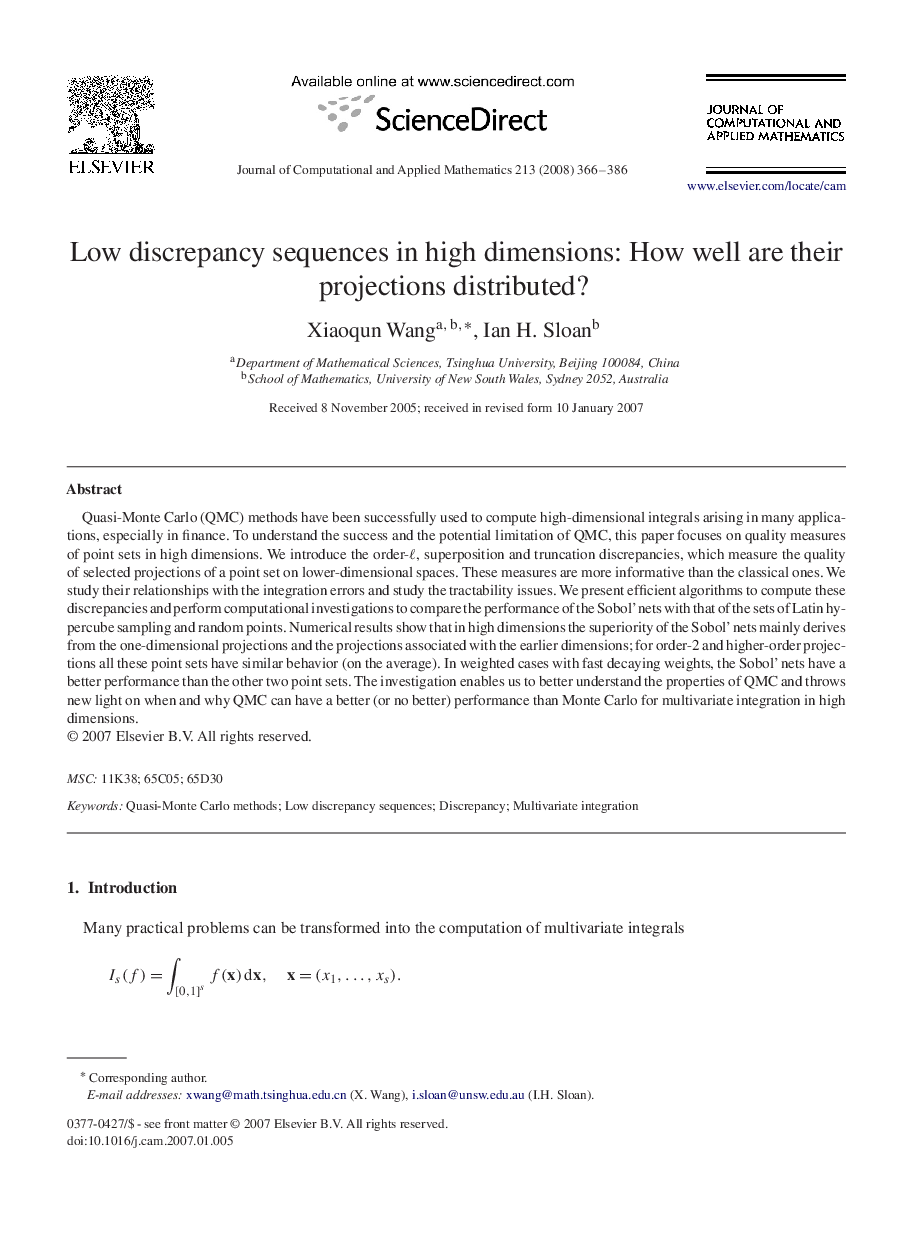| Article ID | Journal | Published Year | Pages | File Type |
|---|---|---|---|---|
| 4642388 | Journal of Computational and Applied Mathematics | 2008 | 21 Pages |
Quasi-Monte Carlo (QMC) methods have been successfully used to compute high-dimensional integrals arising in many applications, especially in finance. To understand the success and the potential limitation of QMC, this paper focuses on quality measures of point sets in high dimensions. We introduce the order-ℓℓ, superposition and truncation discrepancies, which measure the quality of selected projections of a point set on lower-dimensional spaces. These measures are more informative than the classical ones. We study their relationships with the integration errors and study the tractability issues. We present efficient algorithms to compute these discrepancies and perform computational investigations to compare the performance of the Sobol’ nets with that of the sets of Latin hypercube sampling and random points. Numerical results show that in high dimensions the superiority of the Sobol’ nets mainly derives from the one-dimensional projections and the projections associated with the earlier dimensions; for order-2 and higher-order projections all these point sets have similar behavior (on the average). In weighted cases with fast decaying weights, the Sobol’ nets have a better performance than the other two point sets. The investigation enables us to better understand the properties of QMC and throws new light on when and why QMC can have a better (or no better) performance than Monte Carlo for multivariate integration in high dimensions.
